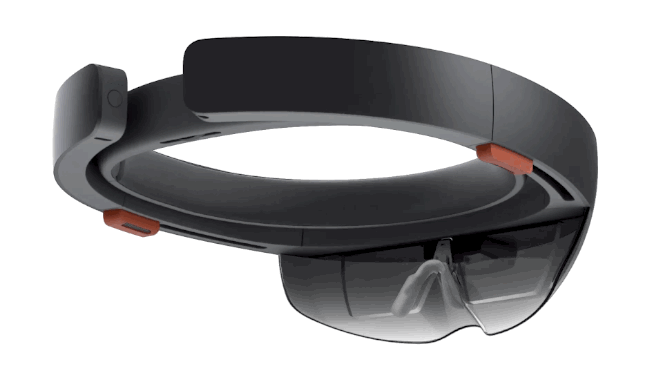Head Mounted Displays and Augmented Reality Headgear
The idea of immersing ourselves deeper into an augmented and or virtual reality has captivated many of us thanks to sci-fi books like Snow Crash and Rainbows End. It has also created an explosion in growth the past few years of Head Mounted Displays (HMD) and augmented reality glasses projects. AR glasses and HMDs have been around for some time but people really started to get excited about augmented reality headwear when Google announced Glass back in 2012. So let's start the review here.
Google Glass:
Before the recent announcement of it being discontinued but now "graduating" from the Google X experimental projects incubator to become its own independent division (that will report to Nest's Tony Fadell), Google Glass was a $1,500 type of wearable technology with an optical head-mounted display (OHMD). It was developed by Google with the mission of producing a mass-market ubiquitous computer. Tailored mainly to work with Google products, Google Glass displays information in a smartphone-like hands-free format.

The Promise:
The Reality:
Despite the public backlash to Google Glass as seen in the Daily Show clip, there is an increasing number of HMD and AR glasses coming onto the market. Sony debuting Morpheus and Facebook buying Oculus Rift for a couple billion certainly got folks serious and interested in the subject and it seems lately everywhere I look some company is releasing or someone is Kickstarting a HMD unit or AR glasses. Let's take a look at the head gear currently available, coming soon, and in the future.
Oculus Rift:
The poster child for VR headsets, the Oculus Rift is a VR success story and by far the most popular HMD not yet on the commercial market. With an original goal of raising $250,000 on Kickstarter back in 2012, the Oculus team raised over $2.4 million with that campaign and then were acquired by Facebook back in March 2014.
I was a backer of their Kickstarter campaign and that got me a DevKit1. The DevKit2 is now available to developers but it has been reported the commercial unit will not ship until February 2016. Facebook has not said what they plan to do with Oculus yet, but recent VR related acquisitions and these comments by Mark Zuckerberg keep the excitement strong for what is coming next regarding immersive technologies and the world's largest social network.
CastAR:
Technical Illusions' castAR is another Kickstarter success story I have reviewed before. According to the Technical Illusions team, castAR is mixed reality mode glasses, allowing for social Projected Reality and fully immersive Virtual Reality.


The castAR system is available to developers for pre-order starting at $345. This package includes the castAR glasses with its built in tracking system, a magic wand, and the 1 meter by 1 meter surface. No date has been set for when a commercial product will ship.
Samsung GearVR:
In collaboration with Oculus, Samsung developed their own HMD called GearVR, which they released to developers late last year. GearVR is a $199 cordless head mount that turns any Samsung Galaxy Note 4 into a virtual reality headset. I personally rate this one as the best mobile VR unit to date.


Atheer One
Atheer Labs is the creator of Atheer One, a pair of AR glasses that are supported by their platform called Augmented Interactive Reality (AiR). Their SDK is built upon the Android APIs and supports 3rd party toolkits such as Qualcomm’s Vuforia SDK and the Unity3D engine. Claiming to be the only portable and immersive smart glasses supporting natural interaction, the One and AiR platform combines immersive 3D augmented reality with natural gesture-based interaction for AR that you can touch.


Vuzix
Formed in 1997, Vuzix has been in the HMD and AR glasses space for a while and has a variety of glasses products. Currently, Vuzix is under contract with DARPA to design and build a next generation heads up display for military ground personnel.
With primary focus on the gaming industry, OSVR (Open Source Virtual Reality) is an initiative to bring open source VR to the masses. Comprised mainly of hardware vendors, it is an ecosystem that strives to be fully open-source with their OSVR Hacker Developer Kit schematics and drawings for the headset available for download so one can quickly build their own or improve on existing VR-Glass designs. OSVR software supports multiple operating systems, plugs into leading game engines and is freely available under a Apache 2.0 license.

MoverioSmart Glasses:
Japanese electronics company Epson (Seiko Epson Corporation) has had a pair of Augmented Reality glasses on the market for a few years now. According to Epson, "The next-generation Moverio BT-200 smart glasses are designed to change how you experience the world around you. With new and improved features and a more compact size, these innovative smart glasses are setting the new standard in Augmented Reality."
Meta's SpaceGlasses:
Meta claims its initial product, called SpaceGlasses, is meant more as a tool for app developers than as a gadget you’d want to actually wear. Like other AR glasses, it needs to be physically tethered to a computer in order to work. It includes a see-through projectable LCD for each eye, an infrared depth camera, and a standard color camera, as well as an accelerometer, gyroscope, and compass. The Meta 1 Developer Kit is available for $667.00.
Cardboard HMDs:
By far the cheapest option for a HMD on this list, cardboard VR units turn any supported smartphone device into a virtual reality headset. It was with the debut of Google Cardboard at Google's I/O conference that got others looking at this low cost alternative and it didn't take long for other cardboard clones to hit the market. Based in San Francisco, DODOcase has entered the VR space by manufacturing a line of their own cardboard units and with a successful Kickstarter campaign for DIYVR (Do It Yourself Virtual Reality).

Sulon Cortex: (Not yet released)
Sulon Technologies released at CES 2015 its Cortex AR/VR headset. Though it's still early days for the company's standalone Cortex AR/VR headset, it's managed to merge immersion and augmentation in some pretty fascinating ways. When it releases to developers, it plans to cost $500 a unit.
Microsoft HoloLens: (Not yet released)
Microsoft recently debuted their entry into the AR glasses and HMD space with a device they have named HoloLens. It is great to see them get excited about immersive technology and I highly recommend a visit to this article on the Verge about their first hand demo with the unit.
Magic Leap: (Not yet released)
Saving the most mysterious for last, Magic Leap is making waves in the augmented reality space with their recent raising of $542 million dollars and hiring of Sci-Fi author Neal Stephenson as their ‘Chief Futurist’. Magic Leap has been secretive about how their system works technically, but a plethora of disclosures in their filings provide the broad outline. A lightweight head-mounted device will house a tiny projector comprised of bespoke prisms and lenses that will beam images onto the user’s retinas creating a “dynamic digitized light field signal.” Infrared positioning cameras, GPS modules, and multi-axis accelerometers will assist in blending images and video with the real world. Let's hope it lives up to the promise.

Quite the list and this is by no means all the headgear devices and HMDs coming soon or available to developers now. While it is still too early to say which devices will reign supreme, it can be said that with this many HMDs and AR glasses coming to the market that our digital and real lives are about to become a lot more immersive and much faster than most anticipate. :)













Comments